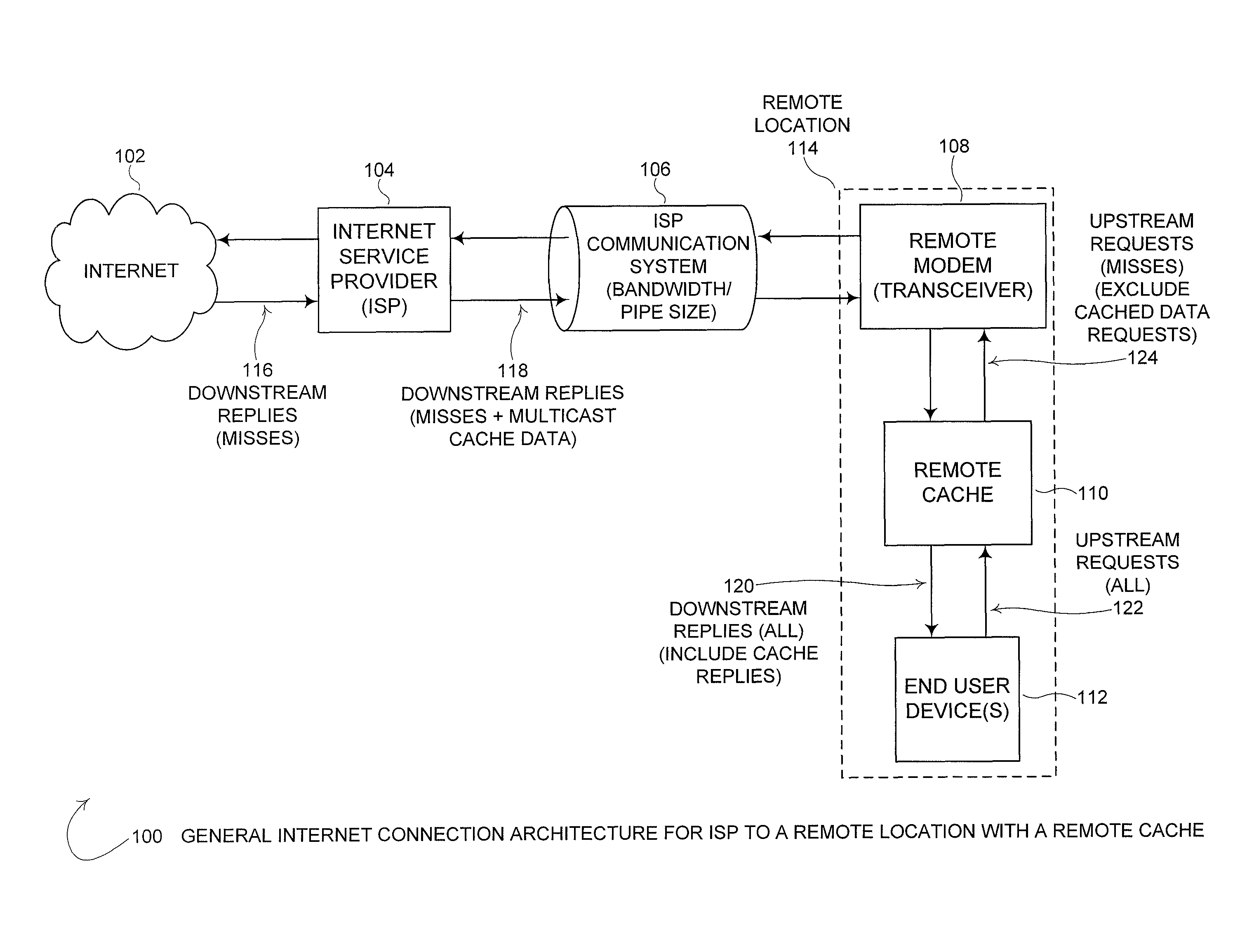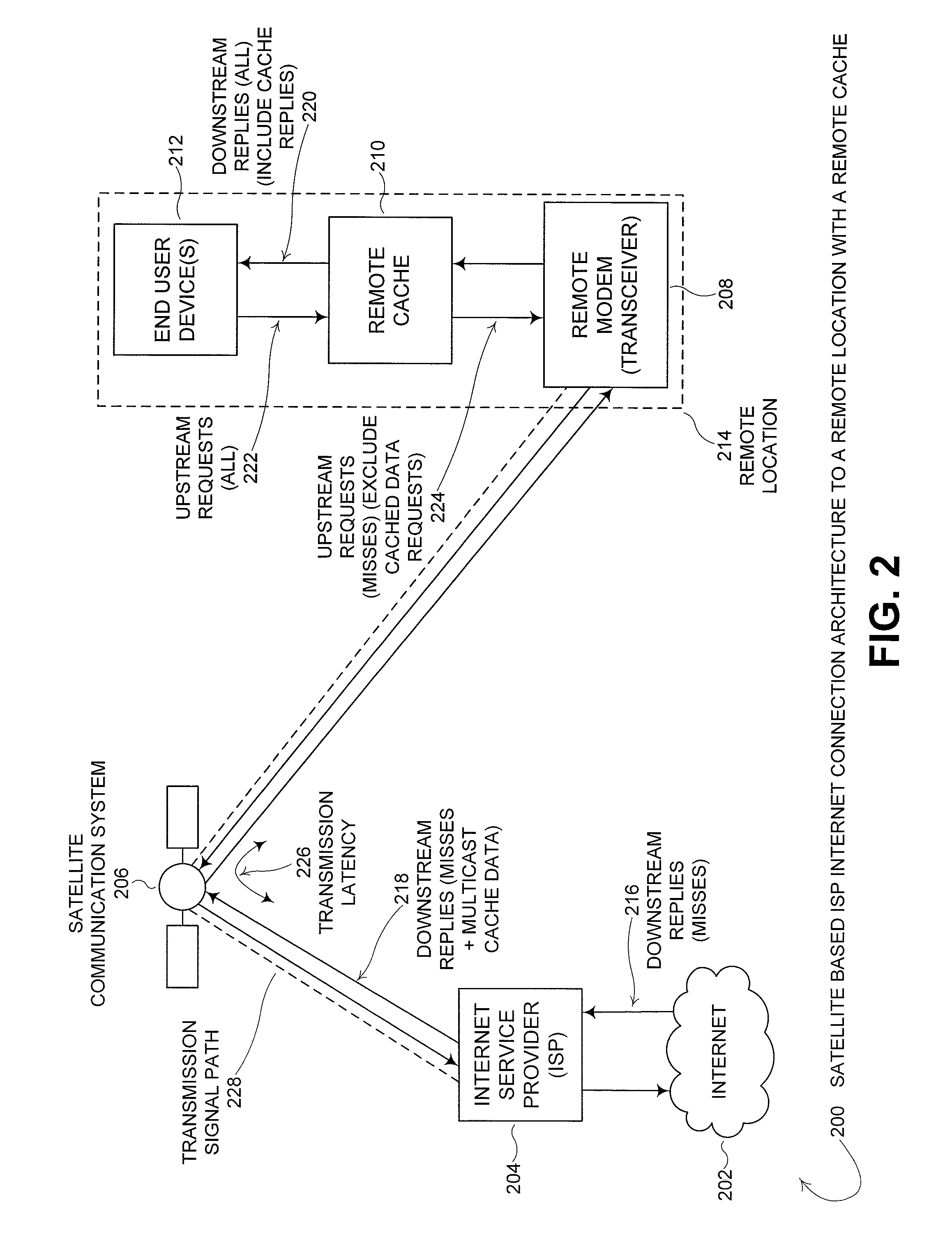Distributed cache—adaptive multicast architecture for bandwidth reduction
a multicast architecture and distributed cache technology, applied in the field of distributed cache — adaptive multicast architecture for bandwidth reduction, can solve the problems of one client usage, significant bottleneck in the potential speed of access of the communication system the general bandwidth limitation of the communication system connection between the isp and the isp client, etc., to maximize bandwidth savings, and the effect of maximizing the use of communication bandwidth
- Summary
- Abstract
- Description
- Claims
- Application Information
AI Technical Summary
Benefits of technology
Problems solved by technology
Method used
Image
Examples
Embodiment Construction
[0016]FIG. 1 is a schematic illustration 100 of the general Internet connection architecture for connecting an Internet Service Provider (ISP) 104 to a remote location 108 having a remote cache 110. One or more Internet end user devices 112 may connect to the Internet 102 through an ISP 104. The Internet 102 is connected to the ISP 104 and connects to the remote location(s) 114 via the ISP communication system 106. The ISP communication system 106 may be limited in how much data may be delivered (typically measured in bits per second—bps). The schematic illustration 100 shown in FIG. 1 illustrates a single remote location 114, but various embodiments may have the ISP 104 concurrently connect to one more remote locations 114 via the ISP communication system 106. In other words, the ISP 104 connects to at least one remote location 114 via the ISP communication system 106. The ISP 104 operates as a communication bridge between the communication protocol used on the ISP communication sy...
PUM
 Login to View More
Login to View More Abstract
Description
Claims
Application Information
 Login to View More
Login to View More - R&D
- Intellectual Property
- Life Sciences
- Materials
- Tech Scout
- Unparalleled Data Quality
- Higher Quality Content
- 60% Fewer Hallucinations
Browse by: Latest US Patents, China's latest patents, Technical Efficacy Thesaurus, Application Domain, Technology Topic, Popular Technical Reports.
© 2025 PatSnap. All rights reserved.Legal|Privacy policy|Modern Slavery Act Transparency Statement|Sitemap|About US| Contact US: help@patsnap.com



